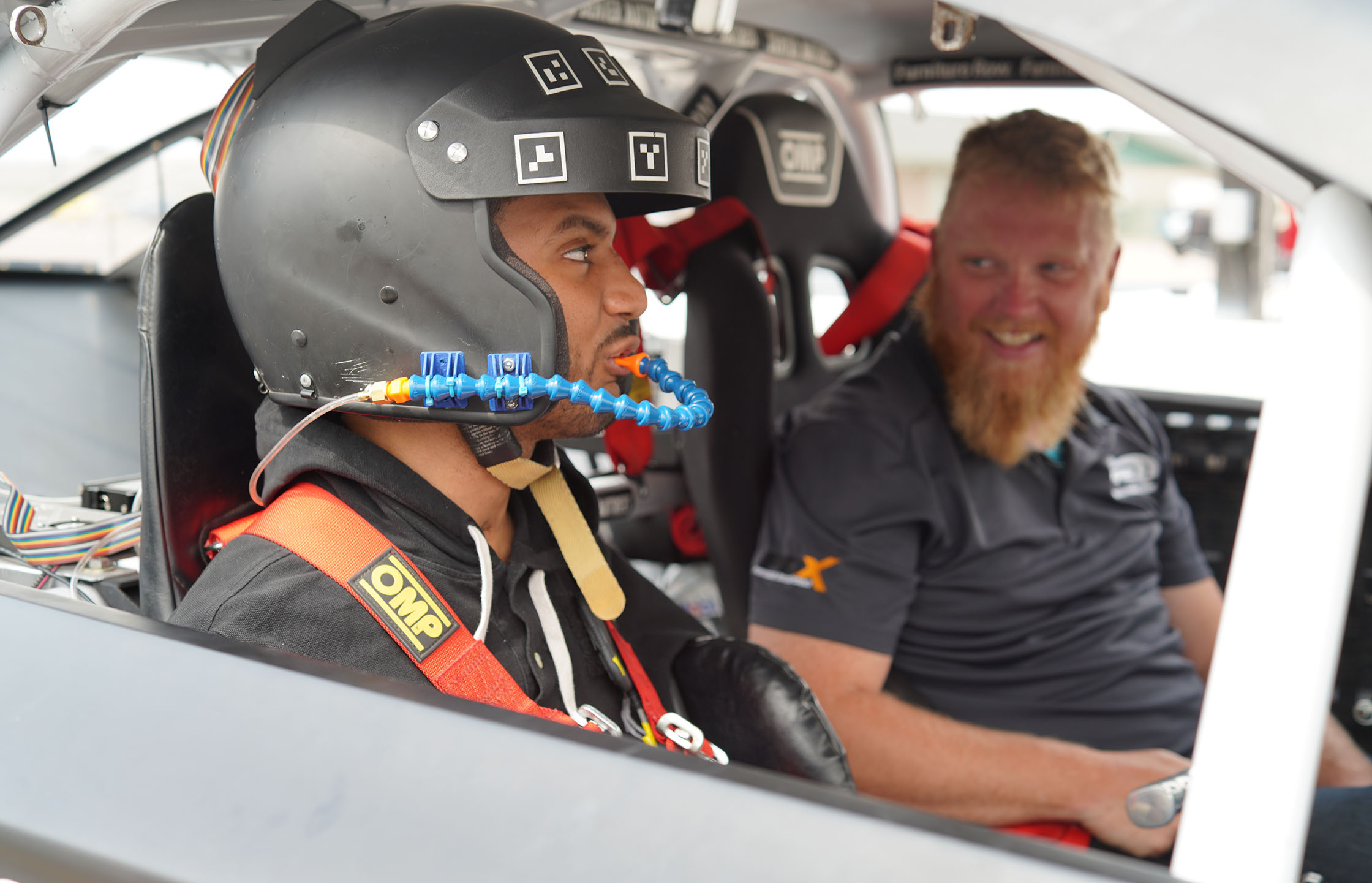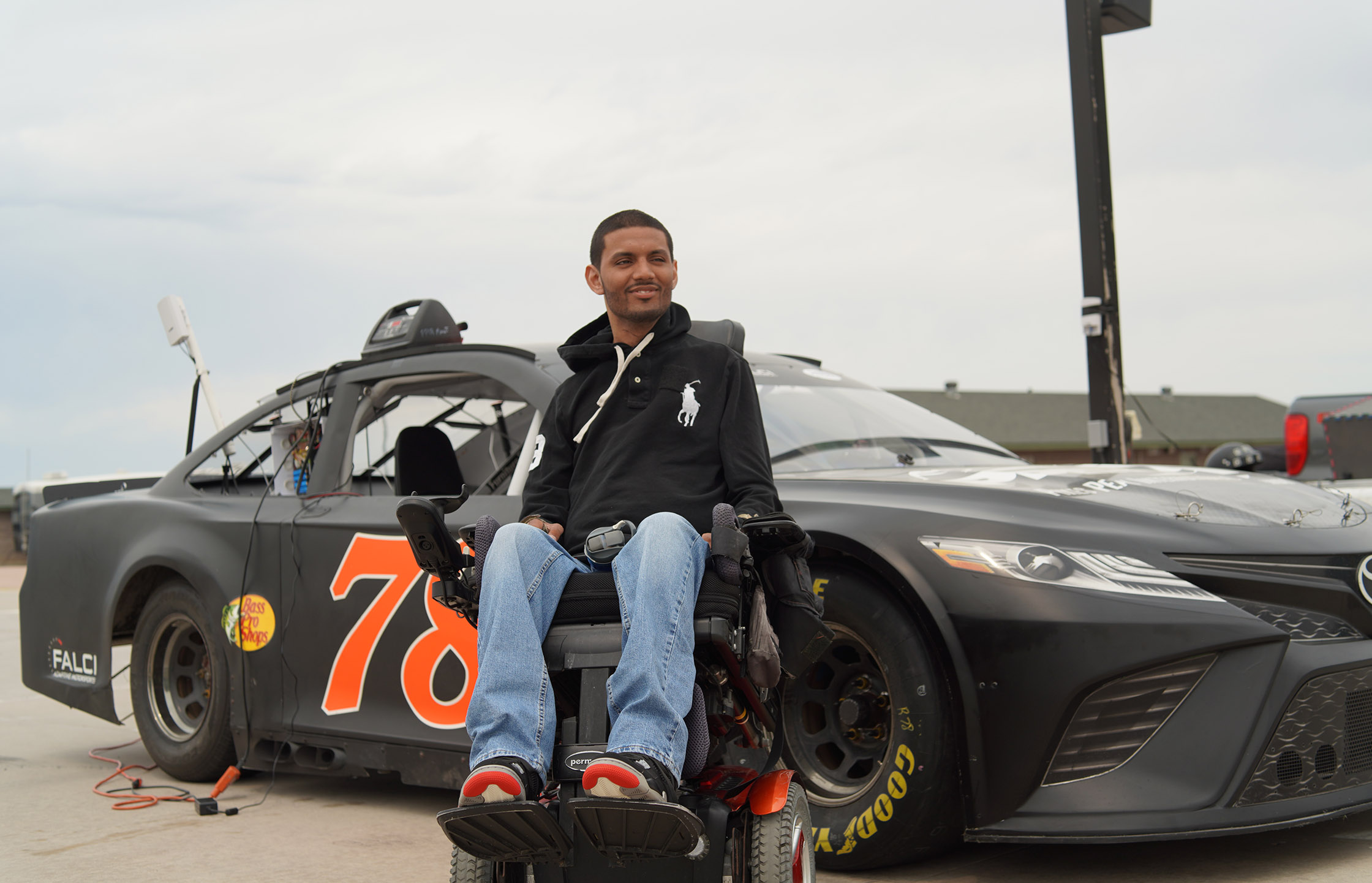Brains Behind the Wheel
An implanted device turns thoughts into motion
By Janette Neuwahl Tannen

German Aldana Zuniga in the driver’s seat with accompanying safety driver.
U
sing an implanted brain-computer interface, researchers at The Miami Project to Cure Paralysis have been able to help quadriplegic German Aldana Zuniga regain some independence by making it possible for him to use his hand simply by thinking about it.
Nine years ago, a car accident left Zuniga, then 16, paralyzed. Doctors told him he would never be able to walk or use his arms properly again, but Zuniga never gave up on the idea.
Today, Zuniga is making significant strides. Using a surgically implanted brain-computer interface (BCI) that can decipher his thoughts and an adaptive glove, he has regained some control of his right hand, allowing him to open doors, feed himself, write short notes and brush his teeth.
And last spring, Zuniga was able to leverage the BCI to drive an adapted NASCAR racecar around Pikes Peak International Raceway in Colorado, just by thinking about grasping the accelerator.
In 2018, as part of a research study, Zuniga volunteered to have the BCI implanted to see if the technology could improve the lives of people like himself who are living with spinal cord injuries. It was the first time that doctors at The Miami Project to Cure Paralysis, a Center of Excellence at the Miller School, had implanted a BCI just for research purposes.
By prompting Zuniga to think about the natural task of opening and closing his hand, the researchers were able to develop software that could read his unique brain signals and send them to the glove. Soon, as long as he was wearing the glove, Zuniga could move his thumb, index finger and middle finger of his right hand.
To enable him to drive the racecar, a few tweaks were made to the BCI software. Zuniga still needed to think about opening and closing his hand to engage the throttle, used an adaptive helmet to steer, and had a special device attached to the helmet that he inhaled from or “sipped” to brake. And while there was a safety driver in the car with him, Zuniga was exhilarated by the experience.
“After the first lap, I lost my fear, and the sense of freedom was amazing,” he said. “To see how I was able to control a car — it’s something I never would’ve thought that this device could make possible.” ![]()



